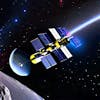Without A Hitch - Astronomy Daily S01E23 Update

Astronomy Daily – The Podcast
Show Notes
S01E23
Astronomy Daily – The Podcast is now available on Apple Podcasts and Spotify:
Apple Podcasts: https://podcasts.apple.com/us/podcast/astronomy-daily-the-podcast/id1642258990
Spotify:...
Astronomy Daily – The Podcast
Show Notes
S01E23
Astronomy Daily – The Podcast is now available on Apple Podcasts and Spotify:
Apple Podcasts: https://podcasts.apple.com/us/podcast/astronomy-daily-the-podcast/id1642258990
Spotify: https://open.spotify.com/show/2kPF1ABBW2rCrjDlU2CWLW
Join Andrew Dunkley and his feisty AI Co-host Halley (no surname) as they bring you todays space, astronomy, and science news in an easy to digest podcast.
Tuesday September 27, 2022
Today’s headline story:
NASA’s DART mission achieved its primary objective today with out a hitch…
These stories and more in this episode…
If you’d like to find out more about the stories featured in today’s show, you can read today’s edition of the Astronomy Daily Newsletter at any of our websites – www.spacenutspodcast.com , www.bitesz.com or go directly to www.astronomydaily.io – subscribe and get the new edition delivered to your mailbox or RSS reader every day….it’s free from us to you.
Please subscribe to the podcast and if you have a moment, a quick review would be most helpful. Thank you…
#space #astronomy #science #podcast #astronomydaily #spacenuts #spacetime #dartupdate #dartnews #nasa
Andrew: Hello there. Thanks for joining me. Andrew Duncley here, the host of Astronomy Daily, where we give you a daily dose of what's been happening in astronomy and space science. And my partner in crime is the one and only Halle, our, uh, AI reporter. Hi, Halle. How are you going?
Halley: I'm fine, thanks, Andrew. And super excited after watching the Dart mission.
Andrew: Oh, yeah. Wasn't it good? I watched it as well. I suppose that's what you're going to read the news with?
Halley: Yes, of course. It's the biggest story of the year, I think. So far, anyway.
Andrew: Andrew Duncany okay, well, take it away, Howie.
Halley: NASA has successfully crashed a spacecraft into the small moon of an asteroid. The double asteroid Redirection test is designed to see if NASA can change the orbit of the moonlet dimorphes, which orbits the asteroid did the most. The impact happened is scheduled at 714 PM. Eastern time in Florida on September 26 and has been called a success. Now they will analyze data to see if they have in fact change the mullets orbit slightly. Diamorphis was chosen because it will enable the analysis team to get feedback much sooner. Had they target Didmos, for example, it might have taken years to see the results. Now scientists expect results in days, or perhaps weeks at the most. The test was carried out to see if deflecting asteroids that threaten Earth might be a defensive option in future. The UK Space Agency has shortlisted groups led by startups Astro Scale and Clear Space for a mission to remove two spacecraft from low Earth orbit in 2026. The UK divisions of Japan based Astro Scale and ClearSpace of Switzerland one £4 million in combined contracts following funds awarded in October to study the mission's feasibility. A consortium led by British small satellite maker SSTL had also taken a share of last year's £1 million active debris removal phase A feasibility study. Phase B lasts until October 2023 and will conclude with a preliminary design review. This will include details about the spacecraft they intend to remove, which must have been sent to orbit under a UK license. Astro Scale said it has found a small number of potential UK satellites currently in congested orbit for what it calls its Cleaning outer Space mission through innovative capture. China just launched two missions less than 40 hours apart, sending three satellites to Earth orbit. The missions began on Saturday when a Kwajo won a solid rocket carrying the Shrink 14 and Shrin 15 spacecraft lifted off from northern China's Taiyun Satellite Launch Center. The 65 foot tall, 20 meters Kwajoane successfully delivered the satellite pair to Orbit, where they will perform a variety of work. According to Chinese media reports. The second of the two launches occurred on Monday from the Xang Satellite launch center in southwestern China's, Sichuan province. A long March 2 D rocket successfully carried the Yaogon 36 remote sensing satellite into orbit. Xinhua provided no details about the satellite, but we can probably assume it's a spy satellite of some kind. And still with China they've just commissioned of the world's largest and most sensitive radio telescope on Saturday, putting it into formal operation after a threeyear trial, the telescope, not unlike the nowdefunct erasebo facility in Puerto Rico will gradually be available to astronomers around the world, providing them with a powerful tool to uncover the mysteries surrounding the genesis and evolutions of the universe. All technical indicators of the telescope have reached or exceeded the potential and its performance is worldleading. According to Shinju Lin, an official with the National Development and Reform Commission, the 500 meters Aperture Spherical Radio Telescope, or Fast, is a single dish telescope with a diameter of half a kilometer and a receiving area equivalent to about 30 football fields. And that's the news, Andrew.
Andrew: Okay. Thanks, Howie. We'll catch you before the end of the show. And I must say it was very exciting to watch the Dart mission as they counted down to the impact of the NASA spacecraft into the moonlight. Uh, dimorphus, which orbits the asteroid, didymos the mission went without a hitch and impact was achieved as scheduled. Now, watching the pictures come in from the spacecraft every second or so as it approached the moonlight was amazing. I don't know if you had a look, but, uh, if you can catch the video, take a look at it right up to the last second. Um, they were feeding one, uh, picture per second, um, back to NASA as, uh, everything unfolded. You could clearly see ditimos in detail as Dart past the asteroid and as it closed in on its target, um, you could see this small, roundish moonlight in high definition and it looked to be covered in boulders and rocks. And we got some sensational close up images before the screen went red, which meant there was an impact on the surface. And NASA then reported los loss of signal by, uh, the way Dart hit the moonlight at around 14,000 miles an hour. That's 22 and a half thousand kilometers an hour. Although I know some people around town here to drive faster than that. Uh, NASA is saying the mission was a success, but they're referring to the impact itself and not the goal of the operation, which is yet to be determined. They'll, uh, now be watching and analyzing the data to see if the moonlight has been bumped into a slightly different orbit. If it has, then they will have proven that a planetary defense system could be developed to knock asteroids that threaten our planet off course so that they'll miss us. That's basically the goal. For the record, though, nothing is headed our way in the near future that we know of. In fact, um, we can't see a threat within 100 years. But NASA has been very clear about this. If we do nothing to prepare for a hit, something is going to whack us eventually. So this test could have significant benefits for the future safety of our planet. And while we're talking about it, let's look at other options. What about nuclear weapons rather than kinetic energy? And, um, just make sure that any large rock headed our way is obliterated. Uh, well, think about what they did with Dart as a game of pool in space. A ball bumps a moving ball and the target changes direction. That's basically what Dart was designed to do. The size of any future threat, uh, would be assessed, and missions could be launched years in advance. And if the object is very large, it might require several dart light hits to do the job and knock it off course. Other ideas, though, have been suggested, like the creation of a gravity tractor, and of course, Hollywood's favorite approach blow the thing to smithereens. Firstly, the gravity tractor. Well, it would require decades of advanced knowledge so that the gravitational effect could be effective. And there's no guarantee that we'll get that much time. Yes, it would be an effective approach for smaller asteroids, but the big ones, they might still get through. And there's been no testing to prove the success or otherwise of a gravity tractor. That brings us to the nuclear option. Would it be effective? Probably is the answer. But it's also being seen as a last resort. If all else fails, NASA doesn't believe nukes are the first option. And there's a risk that blowing up a big rock headed our way could result in a lot of smaller rocks hitting us instead. In 2018, the Russians studied the nuclear option and decided that the only effective method would be to drill into the asteroid and bury the bomb or several bombs and blow it up from the inside, which becomes complex and increases the risk of failure. To destroy a 200 meters rock, for example, would require a bomb 200 times bigger than the one they dropped on Hiroshima. The, uh, bottom line is that nukes could work, but not as a first option. That leaves deflection, which is probably the simplest way to guarantee a hit. Uh, I hope it never has to be done. I hope this never comes to fruition. But we'll soon know if it's the right option. And I might mention, uh, that one of our listeners was at NASA for the event and will be joining me and Fred on the next episode of Space Nuts. Hopefully, if we can get the technology to work. Well, um, yeah, it would have been exciting to be there. I'm sure. The astronomy daily podcast revamped now, um, for something a bit more down to earth, sort of. Eight months ago, there was an underwater volcanic eruption near the Pacific island of Tonga. When the hunga Tonga hung, a volcano blew its stack. The, uh, result was incredible, with ash still in the air today, and, uh, a lot of gas from the volcano as well. Scientists have been studying the effect of the eruption and have discovered that it also blew around 50 million tons of water into Earth's atmosphere. Can you imagine? They're now saying that injection of vapor could increase the moisture levels in the stratosphere by 5%, which could, in turn cause a cycle of cooling and heating on the planet over the, um, next several months. Maybe it's happening already, but long term, we might see the Earth get a bit warmer over a period of several years. Just what we need, huh? Uh, and that's about it for the moment. Um, been plenty to talk about on one particular topic, and that was Dart. Um, but before we go, anything from you, Howie?
Halley: Yes, Andrew. A somewhat different kind of astronomy story. Lego has unveiled its latest creation as part of the Lego Star Wars Ultimate Collector Series. It's a replica of the Razor Crest starship which features in the TV series The Mandalorian. It's 61 87 pieces and will go on sale October 7. Geeks around the world are rejoicing, or they were until they saw the price somewhere around $600. Ouch.
Andrew: Very ouch. Went out of m my league, which I said before, but then again, uh, a lollipop probably costs too much these days. Thanks, Sally. Talk to you soon.
Halley: Bye.
Andrew: And that's it for another edition of Astronomy Daily. Hope you enjoyed it. Uh, please leave your reviews on your favorite podcasting platform, let us know what you think, and don't forget to visit our website, spacenuts. IO. Click on the Astronomy Daily link at the top of the page, and you can catch up on all of those stories and more. Uh, um, while you're there, visit the Space Nuts shop and listen to the latest episode of Space Nuts, with a new episode coming up in a day or two. That's it from me. Thanks for listening. This is Andrew Dunkley for Astronomy Daily.
Halley: The Astronomy Daily podcast with Andrew Dunkley.
New to Astronomy Daily - The Podcast?
Here are some great episodes to start with.













